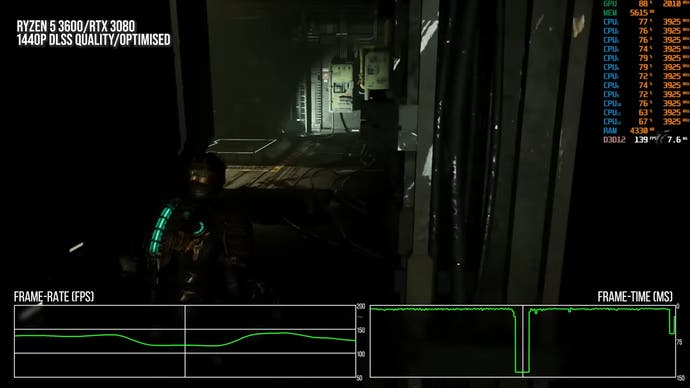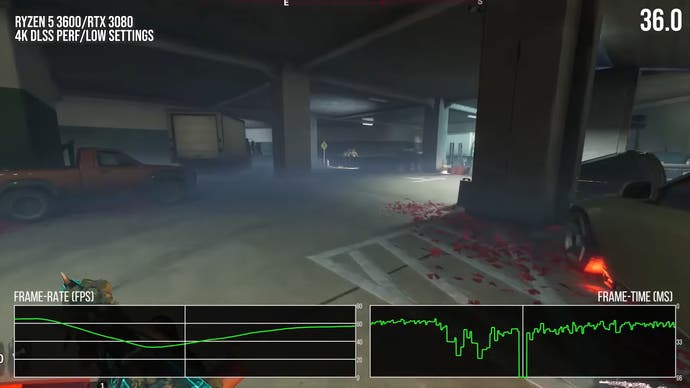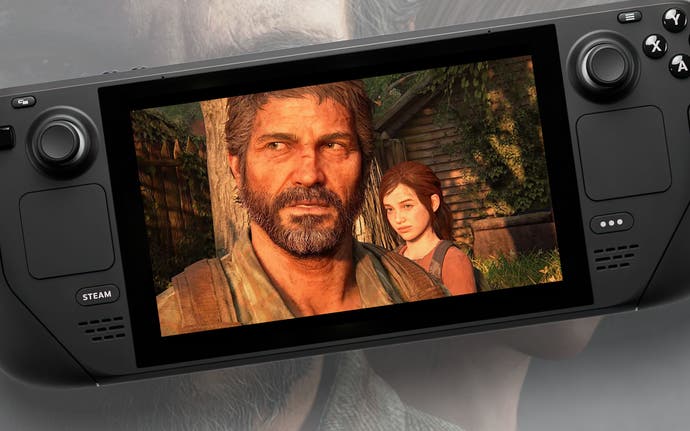Too big for Steam Deck? The most demanding PC games tested
TLOU Part 1, Resident Evil 4, Redfall - and more.
Valve's Steam Deck is a very capable handheld, capable of PS4-class visuals in a compact form factor. Packing a 1.6-teraflop GPU, modern quad-core CPU and plenty of memory bandwidth, the Deck can keep pace with a surprising array of current and last-gen software. Modern PC games get more demanding by the day though and 2023 releases in particular have suffered major performance woes - even on powerful machines. So can the Steam Deck still deliver playable performance in this year's most challenging software?
We're going to start off our exploration of 2023 titles with the Dead Space remake, a survival horror title that delivered impressive visuals when it launched back in January. But how does it hold up on Steam Deck?
As with so many games on Steam Deck, dialling in the right settings is key to a playable experience - but here the choices are at least straightforward, with the medium preset and low volumetrics producing 45-60fps when paired with FSR2 Ultra Performance mode, which scales from a 240p (!) internal resolution to a Deck-friendly 720p output resolution.
We do still see big traversal stutters and inconsistent frame-times with dips to 50ms, but it's still a playable and even enjoyable experience. Relative to the Series S version, we're missing out on some of the subtler details, but the Steam Deck's 7-inch display means this is less of an issue. Artefacting is a near-constant annoyance here though, so we could opt for a higher internal resolution (FSR2 performance or balanced) in exchange for a lower frame-rate target.
March's Resident Evil 4 also fares surprisingly well on the Deck, with a mix of low and medium options plus FSR2 ultra performance upscaling. The only oddity here is that the default Proton version here actually renders the game with odd artefacts, so you need to select 'Proton Hotfix' to run it properly on the current SteamOS release.
Just like Dead Space, a surprising amount of the visual character of this title is maintained, albeit with simpler lighting. FSR2 use here is pretty extreme, but as a byproduct we're rewarded with a very satisfying performance level - most often 50-60fps with some drops to 30s in the most demanding areas and some CPU-driven frame-time spikes. It's a pretty satisfactory experience on the whole.
 'Too Big' for Steam Deck? 2022's Toughest Games Tested: Plague Tale, Callisto, The Witcher 3 + More!
'Too Big' for Steam Deck? 2022's Toughest Games Tested: Plague Tale, Callisto, The Witcher 3 + More!
The next game is where things get tougher - and where we start to see the limits of the Deck. Hogwarts Legacy is a very demanding title, with harsh CPU demands that kneecap our effective performance in this game. Again, we're looking at medium settings plus FSR2 ultra performance to minimise the graphics load and divert power to keep CPU frequencies up.
The game's opening segment runs well - between 50-60fps - but performance crumbles in the open world. Most notable is the Hogsmeade village area, with frame-rates in the 20s and 30s but with huge frame-time spikes that fill the experience with stutter, regardless of refresh rates and frame-rate caps. General open-world traversal isn't quite as poorly situated at around 35fps, but the frame-time readout isn't nearly as jagged, with few dips below 33ms. Compared to Series S, the game doesn't come off too badly from a graphical perspective - we get softer visuals but the only obvious settings concession comes down to a decrease in foliage density. The visuals look fine, and with a bump to our FSR2 settings image quality would be decent as well, at the expense of performance.
We're going to close out our game analysis with a few titles that really push the Deck to its practical limits, starting with Returnal. Settings-wise we're at low with medium textures and FSR2 ultra performance. Unfortunately, even these settings aren't able to provide a good frame-rate, with 30-40fps results in combat with substantial frame-time spikes and big loading stutters. It's a very inconsistent experience that really doesn't hold up well on the Deck at all - though you can at least glimpse what makes Returnal's gameplay so special.
The Last of Us Part 1 is another recent PC port with performance challenges. On Deck, FSR2 ultra performance and low settings results in a wobbly 30-40fps frame-rate and poor visuals, while dialling up graphical quality to medium in FSR quality mode, we get sub-30fps frame-rates for the bulk of play. I'm not especially satisfied with either result.
The last title I tested is Redfall, released earlier this month. Somewhat predictably, we settled on FSR2 ultra performance mode plus medium settings but here the lower-density nature of the visuals means the upsampling doesn't actually cause particularly egregious artefacting in motion, so the game actually manages to look pretty decent. Unfortunately, we're still limited by CPU performance here, but interestingly the Deck isn't too far behind the likes of the Ryzen 5 3600 - a pretty impressive turnout, all things considered. Frame-times in typical gameplay are still erratic, which isn't ideal, but at least the game is playable.
Summing up then, of the six recent AAA releases we've looked at, only the first two titles are genuinely good experiences on Steam Deck - but perhaps that's less of the fault of the Steam Deck and more a disappointing trend with modern PC ports - which seems to have accelerated in 2023. In many cases, we're seeing profound CPU limitations that limit a consistent experience to the most powerful processors - and even that at times isn't enough. So when these titles hit the somewhat limited Steam Deck CPU, with four cores, low clocks and an older architecture, they really struggle.


There's no sign that this trend will abate any time soon, so for now I think it's best to think of some games as basically off-limits for good Deck performance. Demanding PC titles originally built around current-gen consoles, especially those that use Unreal Engine 4, seem to indeed be 'too big for Steam Deck'. That doesn't mean that every new release will fare poorly on Valve's handheld, but it does constrain the percentage of newer titles where you can get a good experience.
If you do want to play top-end games on the Deck, there are a few ways to ensure you get the best possible gameplay - such as opting for a 40Hz refresh rate for more consistent frame-times. This works well in Dead Space and RE4, but the other titles' severe frame-time fluctuations make this technique ineffective. Still, the 40Hz option is important to remember for games that play nicely with the Deck from a CPU perspective.
You can also dial in a frame-rate cap, via the game itself or via the SteamOS front-end. This can add input lag of course, so it's going to depend on a game-by-game basis whether this is a good idea or not. For some of the more challenging games we've seen today, I'd probably rather maximise responsiveness and keep frame-rate uncapped, because the game will be unstable no matter what. For others, a cap may prove quite suitable. When we are targeting lower frame-rates, it makes sense to dial up some of the settings to match - eg opting for FSR2 performance or balanced rather than ultra performance to produce better image quality.
Forza Horizon 5, High, TAA
Above: some early ROG Ally performance figures at various power levels vs Steam Deck.
The Steam Deck is powerful, but the latest PC software often isn't well-suited for it thanks to challenging CPU and memory requirements. The Deck is still perfectly well-suited to less challenging software, but the bumper crop of recent big-budget games are just about too big for Valve's ultraportable PC.
Upcoming gaming handhelds hold some potential to shift the balance of power though, with AMD's new 4nm 'Phoenix' silicon showing up in devices like the ROG Ally. Actual performance gains tend to be modest over Steam Deck at the same power draw, with circa 20 to 30 percent fps boosts at the default 15w TDP, but higher wattages deliver better results at the expense of battery life.
Ultimately, for both the Steam Deck and its immediate successors I think a firm dose of expectation management is needed. PS4-class gaming in a portable form factor remains no issue at all - but demanding current-gen software proves a lot tougher. It's no longer reasonable to think that gaming handhelds should be able to plow through virtually every game in some way or another. Despite this though, the Steam Deck remains a fascinating device - and I'm sure this isn't the last time we'll put it up against the most challenging PC titles.



